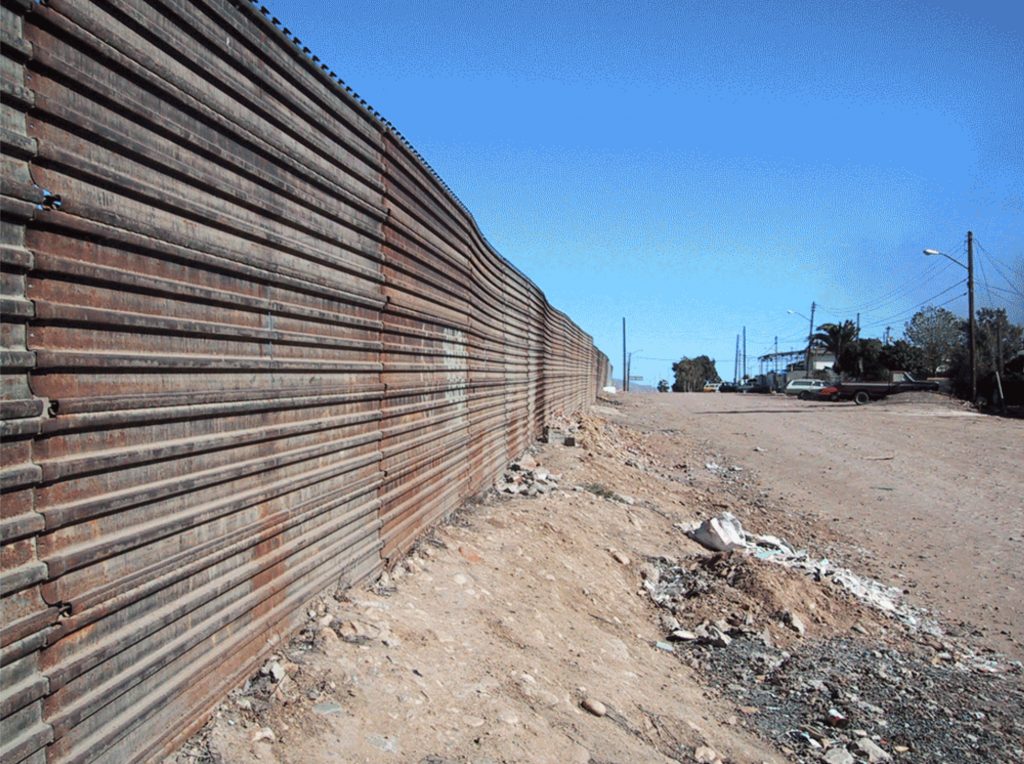
Neutrality is Complicity
By Teddy Cruz and Fonna Forman
Last Spring, an anonymous group of architects, designers, and artists announced an international competition to design a new border wall between the United States and Mexico. The proposal was the brainchild of the Third Mind Foundation, a consortium dedicated to experimental forms of interdisciplinary collaboration; and the competition was inspired by Donald Trump’s incendiary campaign promise of a continental border wall. The Third Mind began their challenge with an emphatic statement “Let us be clear, we take no position on this issue, we remain politically neutral.” They claimed, in fact, to be “moving beyond politics” by simply bringing the expertise of architecture to bear on current socio-political realities.
Who would have imagined that this cultural exercise in “political neutrality” would have manifested one year later as an actual “federal business opportunity.” This is the language of the recent RFP issued by the Trump Administration for a “design-build structure” to span the southern border of the United States.
Sadly many architects, urbanists and engineers seem to be getting onboard, demonstrating a profoundly limited conception of the possibilities of architecture. To respond to Trump’s wall with a serious discussion of material choice, construction techniques, and maintenance, or to think about the potential economic opportunities that a more “creative and beautiful” wall can open up, is to hide complicity under a pretense of neutrality, and to capitulate to a world fundamentally shaped by power and capital and increasingly defined by social and economic injustice. For too long, our creative fields have been smoothly aligned with the hegemonic power of neoliberalism, carrying out an apolitical project of beautification that suppresses difference and the conflicts that are at the basis of today’s urban crisis – a crisis amplified by uneven urban development and the erosion of public commitments across the globe. Beautifying the wall naturalizes and legitimizes it, makes it somehow less intolerable, relieves public guilt, and delays its ultimate and just demilitarization, and a change in our public vision.
In our current political climate it is more important than ever for architects to take a position against inequality, against xenophobia, against building border walls. Architects must decide where and when not to build. Let the wall be the hideous steel fence that it is, as a naked manifestation of unjust political power, and let’s resist it and find creative ways to transgress it, until enough of us exert our democratic counter-power to dismantle the politics of fear that produced it.
Cruz & Forman direct the UCSD X-Border Initiative, and are principals in Estudio Teddy Cruz + Forman, a research-based political and architectural practice in San Diego. Their work emphasizes urban conflict and informality as sites of intervention for rethinking public policy and civic infrastructure, with a special emphasis on Latin American cities. Their practice convenes knowledges from across the fields of architecture and urbanism, environmental and social practice, political theory and urban policy, visual arts and public culture, and mediates the interface between top-down institutions and the bottom-up intelligence of marginalized communities. From 2012-13 they served as special advisors on Civic and Urban Initiatives for the City of San Diego and led the development of its Civic Innovation Lab. Their work has been funded by the Ford Foundation, the Andrew W. Mellon Foundation, ArtPlace America, and the Surdna Foundation, among others.
Learn more about their work and research from “Unwalling Citizenship” on The Avery Review. The text explores the implications of the new administration’s immigration policy reflecting on the long-time urban, social, cultural, and economic dynamics of the San Diego-Tijuana border region.
Also, on March 10th Cruz & Forman gave a public lecture at the Yerba Buena Center for the Arts in San Francisco, to open their latest exhibition. “Visualizing Citizenship” is a study of public imagination in three urban sites: the border region of San Diego / Tijuana; Bogotá Colombia under the administration of Mayor Antanas Mockus; and Medellín, Colombia under the administration of Sergio Fajardo.
Watch below:




